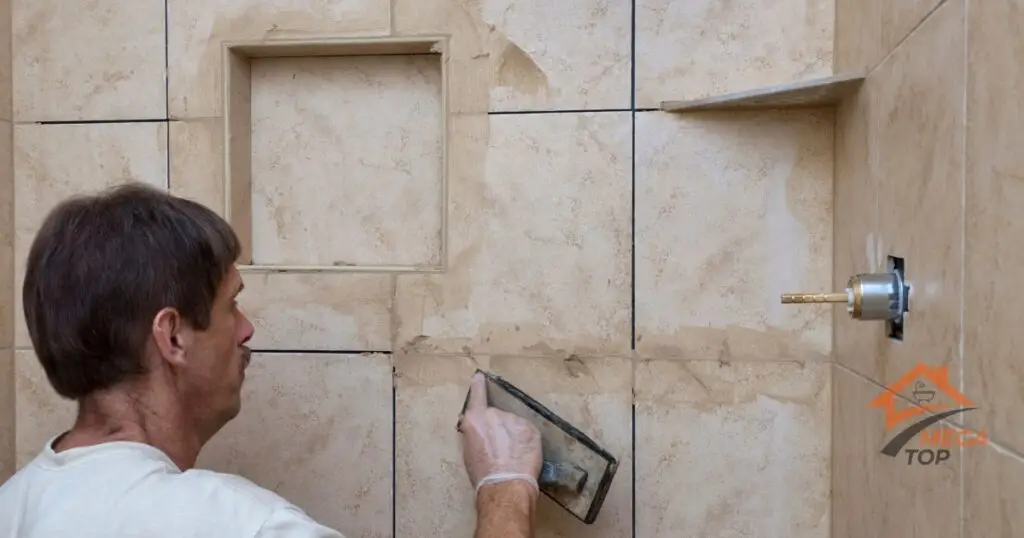Understanding Bathroom Sealant: What It Is and Why You Need It
Bathroom sealant, often called grout sealant or caulk, is a waterproof substance used to protect the grout and edges in a bathroom from moisture, mold, and mildew. Applying sealant correctly can extend the lifespan of your grout, tiles, and bathroom fixtures by creating a moisture-resistant barrier.
Common Types of Bathroom Sealants
Not all sealants are the same, and understanding the differences can help you select the right one for your needs.
Grout Sealant vs. Caulk
- Grout Sealant: Specifically designed to penetrate grout, it protects the grout lines between tiles, particularly in wet areas like showers and around sinks.
- Caulk: Used at the edges and joints where surfaces meet (such as where the wall meets the tub or shower pan). Caulk provides flexibility and creates a watertight seal in bathroom corners and edges.
Benefits of Using Bathroom Grout Sealant
A quality grout sealant helps protect against:
- Mold and Mildew: By keeping moisture out, sealant reduces mold growth.
- Water Damage: Sealant creates a waterproof barrier, preserving grout and underlying surfaces.
- Staining: Grout sealant helps prevent stains from soap scum, dirt, and water minerals.
Types of Bathroom Grout Sealants
Different sealants offer distinct benefits, depending on the type of bathroom and level of moisture exposure.
Silicone Sealant for Bathrooms
Silicone sealants are ideal for bathroom grout, especially in areas that require strong water resistance.
- Properties: Silicone is flexible, waterproof, and highly resistant to mold and mildew.
- Best Uses: Commonly used in showers, around bathtubs, and on countertops, where frequent water exposure occurs.
Acrylic Sealant for Grout and Tile
Acrylic sealants are water-resistant and easy to apply, though they may not be as durable as silicone.
- Advantages: Typically paintable and has a smooth finish.
- Disadvantages: Less flexible and may not last as long in high-moisture areas.
- Best Uses: Often used in areas that don’t get heavy exposure to water, such as around bathroom cabinets.
Latex Sealant for Grout
Latex sealant is a budget-friendly option with some water resistance, making it suitable for bathrooms.
- Pros: Latex is generally easy to apply, dries quickly, and can be cleaned with water.
- Cons: Not as durable as silicone or epoxy and may need frequent reapplication.
- Best Uses: Suitable for lower-traffic areas and for filling in smaller gaps in grout.
Epoxy-Based Grout Sealant
Epoxy grout sealant is highly durable and resistant to water, making it ideal for heavy-duty applications.
- Ideal Applications: Often used in commercial bathrooms and high-traffic areas due to its strong resistance to moisture, staining, and chemicals.
- Considerations: Epoxy is more difficult to apply, so it’s often recommended for professional installation.
How to Choose the Right Bathroom Grout Sealant
Selecting the right sealant depends on factors like moisture exposure, surface material, and the level of maintenance you prefer.
Waterproofing Needs: Choosing Mold-Resistant Sealants
For bathrooms with high humidity, look for mold-resistant sealants with antimicrobial properties, especially if you live in a damp climate. Silicone and epoxy are often ideal for such settings.
Longevity and Durability: Sealants for High-Traffic Bathrooms
If your bathroom sees heavy use, choose a high-durability sealant like epoxy or silicone, which withstand frequent exposure to moisture without deteriorating.
Selecting Sealants for Different Materials
The type of tile or countertop material will affect your choice of sealant.
- Ceramic and Porcelain Tiles: Compatible with most silicone and acrylic sealants.
- Natural Stone: Requires a specific type of sealant to avoid staining. Look for stone-safe options, as traditional sealants can discolor stone.
Applying Bathroom Grout Sealant
Applying grout sealant is straightforward with the right preparation and method. Here’s a step-by-step guide.
Preparing the Surface for Sealant
- Clean the Grout: Remove dirt, mold, and any previous sealant residue with a grout cleaner or a mild bleach solution.
- Dry Completely: Ensure that the grout is completely dry to avoid trapping moisture, which can lead to mold growth.
Step-by-Step Guide to Sealing Bathroom Grout
- Apply the Sealant: Use a small brush or applicator bottle to apply the sealant directly onto the grout lines.
- Wipe Excess: Quickly wipe any excess sealant off the tiles with a damp cloth to avoid streaks.
- Let It Cure: Allow the sealant to dry according to the manufacturer’s instructions (usually 24 hours).
How Long Does Bathroom Grout Sealant Last?
Most bathroom grout sealants last between 1-3 years, depending on bathroom humidity and usage. Areas like showers may need more frequent reapplication.
Maintenance and Reapplication of Bathroom Grout Sealant
Regular maintenance ensures the sealant continues to protect your grout from water and mold.
How Often to Reapply Grout Sealant
Typically, reapply grout sealant every 1-2 years in high-moisture areas, and every 3-5 years in lower-moisture settings. Showers and other wet zones often need more frequent attention.
Signs It’s Time to Replace Bathroom Sealant
Replace bathroom sealant when:
- You see signs of mold or mildew growth on the grout.
- The sealant appears cracked, discolored, or worn out.
- Water begins seeping into the grout lines, indicated by dark spots.
DIY vs. Professional Sealant Application
While DIY application is often manageable with simple tools, professional sealing may be beneficial for larger or complex jobs to ensure even coverage and long-lasting results.
Common Mistakes to Avoid When Using Bathroom Sealants
Ensuring effective sealing involves avoiding common mistakes that can compromise the sealant’s performance.
Skipping Surface Preparation
Failing to clean and dry grout thoroughly before application can trap moisture, leading to mold and mildew issues beneath the sealant.
Choosing the Wrong Type of Sealant
Using a non-waterproof or incompatible sealant can lead to early deterioration. Ensure that your sealant is designed for bathroom use and is suitable for the materials you’re sealing.
Not Allowing Sufficient Curing Time
Rushing the drying process weakens the seal. Always allow ample curing time as specified by the manufacturer to ensure a strong, waterproof barrier.
Converting to the right bathroom grout sealant is a small but essential step to maintaining a clean, waterproof, and attractive bathroom. Whether you opt for silicone, acrylic, latex, or epoxy, using the right sealant and applying it correctly will help protect your bathroom’s grout and extend the life of your tile surfaces.
FAQ
Silicone-based sealants are often best for bathrooms, as they provide flexibility and water resistance.
Typically every 1-2 years, depending on moisture levels and usage.
Most sealants work on ceramic and porcelain grout, but always check compatibility for natural stone.
No, grout sealant is used to protect grout lines, while caulk seals joints and edges to prevent leaks.
Yes, most grout sealants are easy to apply with proper preparation and instructions.





